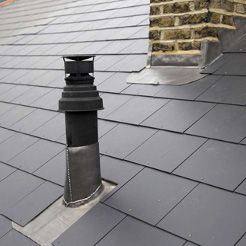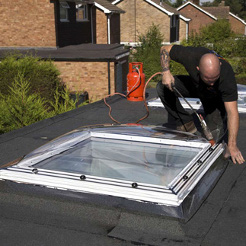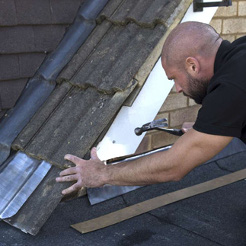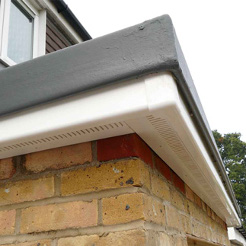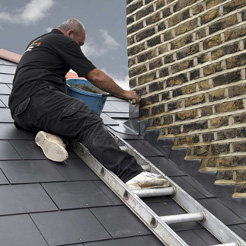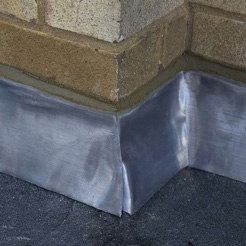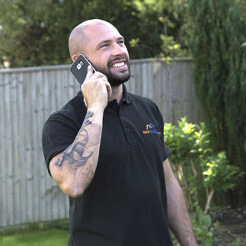GRP fibreglass roofing is one of the most popular options for weatherproofing flat roofs. It can also be used for pitched or barrel-vaulted roofs. GPS roofing is often seen on extensions, porches, balconies, garages and sheds.
So what is a GRP roof and why choose one?
What is a GRP roof?
GRP stands for ‘Glass Reinforced Plastic’, a laminate material made from polyester resin reinforced by chopped strand mat glass fibres. This laminate has been used to cover and waterproof roofs for over 60 years, and has proven to be a simple, safe and reliable material. Recent advances in GRP technology has seen its popularity soar in recent years.
Why choose a GRP roof?
Although GRP roofs can cost more than other flat roofing solutions, they come with a number of significant advantages that make the additional cost worthwhile:
- Resistance: GRP roofs have no joints or seams and are given a waterproof top coat finish. This makes the roof resistant to all weather conditions including storms, snow, frost and blazing sunshine. GRP is also resistant to fire.
- Durability: GRP roofs are exceptionally strong and durable. If they are properly installed by an experienced professional they can easily last for at least 25 years with no observable deterioration.
- Flexibility: GRP is a flexible material which can be easily shaped to fit the design of any roof. It’s a good choice for more complex roof shapes.
- Visual appeal: GRP roofs come with a top coat resin finish which is more visually appealing than the rubbery look of other roof covering systems. There is a wide range of colours to choose from for the top coat, although the traditional dark grey is the most popular.In addition to the classic and popular dark grey, GRP roofs can also be finished in a variety of other shades, including a sleek and modern grey hex code , which can further enhance the visual appeal of the roof.
- Lightweight: GRP is much lighter than other options, so it’s a great choice for lightweight or green roofs.
- Safety: GRP fibreglass is much safer to install than traditional felt systems, reducing the risk of on-site accidents. Unlike other systems, GRP does not require any open flames or hazardous tools to install.
- Maintenance: GRP roofs are easy to repair and maintain. All that’s required is that the roof is brushed or hosed down every now and then to keep it clean.
- Repairs: If properly installed, GRP roofs rarely need to be repaired. Should the fibreglass somehow develop a split or a hole, it’s a simple matter to fit another layer of GRP over the top. GRP is not affected by UV light, but it can fade over the years. This will only affect the look of the roof, not it’s physical qualities. To restore its original look, a new layer of top coat can be applied.
How much does a GRP roof cost?
The cost of a GRP roof will depend on a number of factors, such as whether a new roof is constructed or an existing roof is being repaired or altered.
You should also take into account any structural repairs required to the roof and if any guttering or downpipes need to be altered.
As GRP roofing is has far superior durability compared to traditional EPDM rubber roofing systems, you might expect GRP to cost a great deal more. Fortunately, this is not the case. When you factor in the durability, ease of maintenance, weather resistance and attractive finish, GRP roofs can become very competitive in price.
Need more advice on GRP roofing for your home? Why not give Roof Rescue a call on 020 3189 1618. Our experts will be on hand to answer any questions or to book you an appointment.

